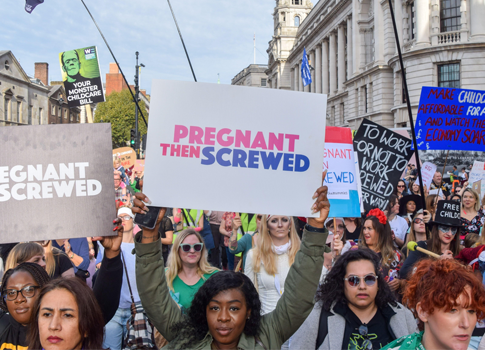With Q2 drawing to a close, we took a look at some of the biggest trends impacting the media industry right now and how they may shape the remainder of 2023.
SEO : Google’s recent E-E-A-T updates and AI guidelines are changing the way we create content
1. Author experience is becoming an increasingly important factor
Content marketers have long been following the E-A-T framework, (Expertise, Authority, Trust) when creating SEO content, however, there’s a new ‘E’ in town. Experience is now an important ranking factor, updating the acronym to E-E-A-T. This means that Google is taking the experience of the author into consideration when indexing content.
For example, if you are a qualified nutritionist writing for a health website, then this content is more likely to be trustworthy and useful for users because it is coming from a knowledgeable source. Therefore, it will be ranked highly in the search results because Google can see a clear connection between the author with ‘real life’ experience and the page contents. Alternatively, if a nutritionist wrote an article on digital marketing trends then this content would not rank well.
Key takeaway: Brands should take into consideration who is authoring their content. It may be worth partnering with specialists in order for your content to come from an expert’s perspective. For example, working with ‘brand ambassadors’ could be a good way to generate content using people who have already built a good reputation in your category.
2. AI is becoming an integral part of SEO so you need to embrace it
At first, it seemed like AI was just another fad, however it does not appear to be going away any time soon! In fact, Google has released new guidelines on how to use AI to generate content in 2023.
The most important thing to remember is that Google values content that is natural and written with a human reader in mind. Therefore, brands need to be cautious when publishing AI generated content as it may not rank well if it’s deemed by Google as not having the ‘human touch’. The best thing to do is to ensure all content generated by AI is reviewed by a human before going live. This is also an opportunity for brands to edit the content so that it sounds like it is coming from their tone of voice, which will resonate more with their audience than generic, auto generated content.
Key takeaway: Quality is still king. No matter how you create content, whether authored yourself or using AI tools, the content needs to be high quality and useful in order to rank well. Therefore, brands need to stop thinking of AI as a way to quickly generate vast volumes of content, and instead, think about how these tools can enhance your content to be of greater use for your reader.
Broadcast: OOH and Radio advertising is ever changing in a post-Covid world
1. During the cost of living crisis advertisers are turning to OOH to drive brand metrics
Out of Home advertising (OOH) has often been viewed as trustworthy because consumers recognise that advertisers are unlikely to lie in such a public setting. Therefore, brands who use OOH can convey trust and confidence, which is very important during times of uncertainty, such as in a cost of living crisis. It’s also a good way to increase brand awareness which is vital during times of recession when many others reduce marketing budgets. OOH can allow you to keep your brand front of mind for when consumers are ready to spend again.
We are also beginning to see footfall increase since Covid, with more than 8 in 10 people attending their workplace every week. However, the hybrid working model seems to be here to stay, which means more people are travelling into the city at the weekends than ever before. As a result, brands will be able to reach commuters seven days a week via OOH advertising, which is a great way to increase impressions.
Key takeaway: OOH has long been a staple of the advertising, and for good reason! It’s a familiar, trustworthy format that many consumers positively perceive as displaying reliable information. Therefore, brands can use OOH to convey a positive brand message during times of uncertainty when consumers are more likely to try new brands that are front of mind.
2. More people are listening to the radio in their homes than in their car
The locations in which we are listening to radio has continued to change post-Covid. Over 62% of the population now listen to the radio at home, compared to only 24% in the car, due to the rise in remote working. This presents a great opportunity for brands to target their audience in the place where they are most relaxed and in a positive mindset, which can boost positive brand sentiment.
Smart speakers also contribute to the rise in home listeners with 50% of UK households owning one. Therefore, listeners simply have to ask their smart speaker to play their favourite radio station and they have access to it anytime, anywhere. However, this presents a unique opportunity for brands to also utilise voice search. After hearing your ad play on the radio, the listener simply has to ask their speaker to order your product, or find your website, which can increase conversion.
Key takeaway: Radio is a great way for advertisers to reach their audience in the place they are most comfortable – their home. With radio stations like Heart FM pulling in 11.2 million listeners, any brand could find their key audience amongst the broad range of listeners, making commercial radio a good option for any media plan.
Social : Updates surrounding AI and Transparency are continuing to impact the social landscape
1. AI generated ad copy has not got all the solutions just yet
AI is becoming an integral part of how we create ad copy. Meta have recently launched ‘AI Sandbox’, an AI platform that can generate text variations, backgrounds and images for social ads. This is a great way for marketers to generate a large volume of ads in a short time frame, whilst also testing what variations perform best.
However, we have already begun to see some issues with the technology. Solely relying on AI to generate copy means you cannot sense check from a human perspective, which is important for strictly regulated industries. For example, finance or pharmaceutical brands need to be very strict in the way they phrase copy in order to meet compliance. AI tools, as they stand, are currently not smart enough to cope with these restrictions. Therefore, brands need to check that the copy generated by AI complies with their industry regulations before going live to avoid any issues with their campaigns at a later date.
Key takeaway: We have already begun to see advancement in AI tools with the launch of Meta’s ‘AI Sandbox’ being an indicator of the technology that is to come. However, there is still progress to be made in terms of making these tools accessible for all industries. Today, the best advice for brands is to use AI tools for ideation purposes, but then to edit the copy yourself so that the final output is appropriate for your business and sector.
2. Google Ads’ Transparency Centre could both help and hinder advertisers
Google’s new Ad Transparency Centre allows you to find active ads on Google. This is a great way of researching what your competitors are doing in this space. You can see ads that competitors have previously run, in what region, during what period and in what format, which can help inform your own social strategy.
Users will also be able to opt out of ads on sensitive topics such as alcohol, dating, gambling, pregnancy and weight loss. The aim is to give users more control over what they do and don’t want to see. This will help to improve the user experience, and as a result, could help shift their negative sentiment towards advertising. However, it is too early to tell what impact this will have on brands. For example, alcohol or gambling brands could be negatively affected if all users chose to opt out of their categories. As it stands, not many users know about this option so it is unlikely to have a significant impact any time soon, but is one for advertisers to watch.
Key takeaway: Transparency is a core concern which isn’t going anywhere anytime soon. However, just like the ban on third-party cookies, the impact new initiatives like Google’s Transparency Centre will have on advertisers is not yet clear. For now, brands can use this new tool for research purposes whilst simultaneously monitoring impressions to see if they are affected.
For more information on any of the Q2 trends above and how they could impact your 2023 marketing plans contact us today.






